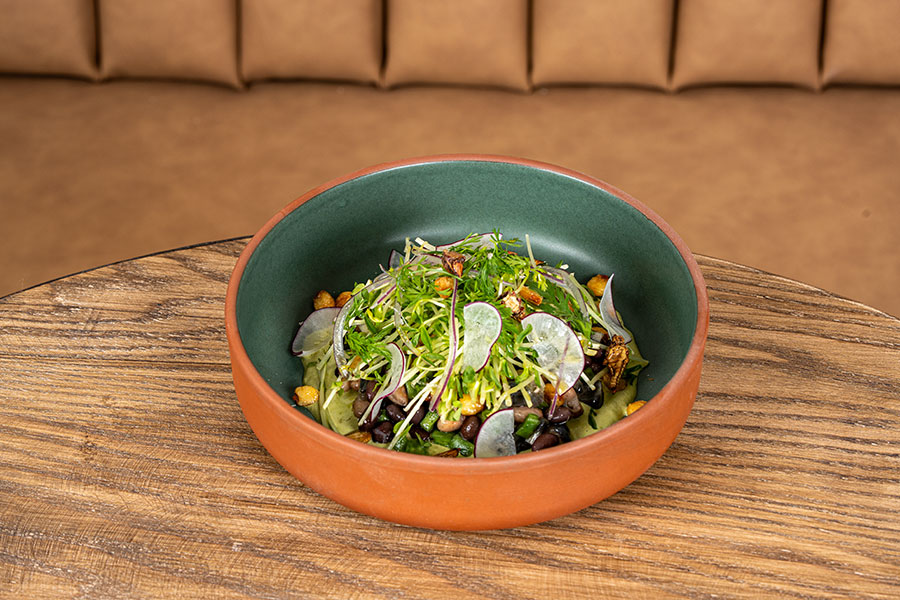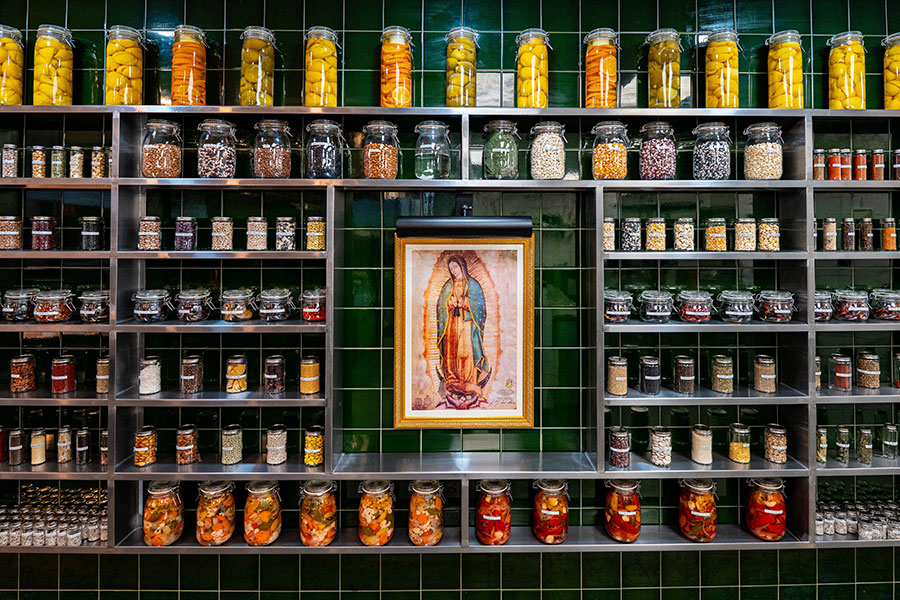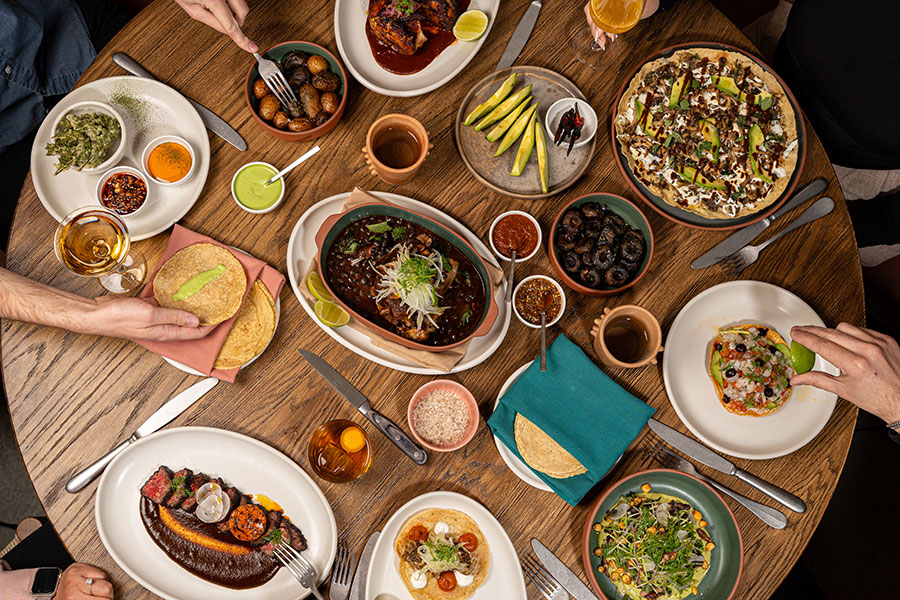At Amá, a Humble Salad Tells the Story of Mexican Heritage
Chef Frankie Ramirez's milpa salad is a culinary tapestry, interweaving millennia-old farming techniques with the rich, personal narratives of the kitchen staff.

The milpa salad at Amá / Photography by Mike Prince
Welcome to Just One Dish, a Foobooz series that looks at an outstanding item on a Philly restaurant’s menu — the story behind the dish, how it’s made, and why you should be going out of your way to try it.
Along the green-tiled wall inside Amá’s kitchen is a shrine to Our Lady of Guadalupe surrounded by jars of traditional Mexican ingredients — heirloom beans, dried chiles, and a rainbow of corn that will remind you of just how underutilized one of the world’s most important ingredients is in American cuisine is. “Every Mexican mom has a Lady of Guadalupe in the pantry or kitchen,” says executive chef Frankie Ramirez.
Aesthetically, it’s a vibrant accent wall. Symbolically, it’s a testament to the deep reverence Ramirez has for tradition and the ingredients he’s working with, a motif that appears throughout his new menu. The heat-building salsas charting a course across the country from Baja to the Yucatán, the crispy tostada topped with a mountain of tuna drizzled in salsa macha, the smoky richness of chile-braised beef cheeks slathered in mole negro, all washed down with a bright sotol cocktail topped with a chapuline (cricket) surfing on a slice of radish — Amá is an exploration of the regional cuisines of Mexico. But the standout on a menu filled with stunning dishes cooked on the wood-fire grill (the octopus is a showstopper) is the humble milpa salad.

The shrine to Our Lady of Guadalupe in Amá’s kitchen
Made with umami huitlacoche, cured nopal, an earthy blend of heirloom beans, crunchy nixtamalized corn, roasted chapulines, and a vibrant medley of pea shoots, purslane, radishes, and a cumin and roasted tomatillo dressing, it is more than just a salad — it’s a representation of a Mesoamerican agricultural practice that has persisted for thousands of years, and, according to Ramirez, it’s one of the most authentic expressions of his culture that he’s been able to bring to the table.
A milpa is a field where dozens of nutritious crops are intentionally planted together in ecological harmony. Think squash, beans, a variety of corn, avocados, sweet potatoes, tomatoes, chilies, melon, and more, all growing together in symbiosis. This indigenous system of intercropping increases biodiversity, promotes healthy soil, and is way more sustainable than modern farming, which favors planting acres and acres of the same crop. Beyond the environmental benefits, milpas are where ancestral knowledge and community meet the land.

Dishes featured on Amá’s menu
Growing up, Ramirez would go with his grandfather to a milpa in Puebla. One of his favorite parts of those childhood trips was watching chapulines jumping through the fields. “I saw chapulines jumping all over the place, and it was so beautiful. There were so many colors — green, yellow, orange — almost like they were alebrije,” he said, comparing the nutritious bugs to the colorful, fantastical creatures depicted in Mexican folk art. While his grandfather harvested wild herbs around the milpa, Ramirez was catching chapulines and putting them in a matchbox to bring back home.
When it came time to create a salad for the menu, Ramirez knew he wanted to take diners to the milpa, so he asked his team for their favorite memories of going out to the field. “Every chef that I have is Mexican,” he says. “We all come from the same background. We all came when we were teenagers. We all came because we were trying to make a better living for our family and send them money. So, the milpa has a meaning for us.”

Frankie Ramirez, Amá’s executive chef
Erika Hernandez, one of Amá’s sous chefs, wanted to bring beans and corn to the dish, based on a story her grandfather shared about the importance of planting those crops together (corn provides beans with a structure to climb while beans give nitrogen back to the soil). Amá’s chef de cuisine, Guillermo Luna, came up with blending two iconic Mexican flavors — cumin and roasted tomatillo — to make the dressing. Ramirez’s contribution was, of course, tied to his memories of catching chapulines, but to show the versatility of corn and express Mexico’s deep relationship with it, he set out to master the art of nixtamalization, which enhances corn’s nutritional value. He even flew his mother and mother-in-law to Philadelphia to show him the traditional technique.
Just as the Lady of Guadalupe stands as a guardian in Amá’s kitchen, presiding over the vibrant ingredients and cherished memories, the milpa salad itself embodies a spirit of culinary guardianship. Every component — from the nixtamalized corn to the chapulines — tells a story, not just of agricultural wisdom but of perseverance and shared dreams among a team united by their heritage. Ramirez says it’s not the most popular dish on the menu, but the people who get it really get it. It’s a living history, an edible shrine, and an offering of love to Mexico’s deep roots and abundance, all in one bowl.


